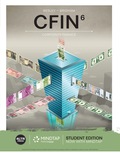
A
Adequate information:
The company expects to sell s
Annual operating cash flow is
The discount rate is
The initial investment required is
To compute: Base-case NPV
Introduction: The current value of a future stream of payments from a business, project, or investment is determined using net present value, or NPV.
B
Adequate information:
After the first year, the project can be sold at
Future cash flows are equal to the first year’s cash flow.
The company will take this action only when the
To compute: At what level of expected sales can the company abandon the project
Introduction: The liquidation value of an asset is another name for abandonment value. The general criteria for choosing whether to cease a product is that the project is abandoned whenever the salvage value of the product exceeds the net present value (NPV) of its anticipated cash flows.
C
Adequate information:
To compute: How the abandonment value can be viewed as the
Introduction: A project's abandonment value is its comparable monetary value if it were to be liquidated right away after paying off all outstanding debts. The value of what you give up when choosing between two or more options is known as opportunity cost.
Want to see the full answer?
Check out a sample textbook solution
Chapter 7 Solutions
CNCT ACC CORPORATE FINANCE
- Item 2 Sequoia Furniture Company’s sales over the past three months, half of which are for cash, were as follows: March April May $ 426,000 $ 676,000 $ 546,000 Assume that Sequoia’s collection period is 60 days. What would be its cash receipts in May? What would be its accounts receivable balance at the end of May? Now assume that Sequoia’s collection period is 45 days. What would be its cash receipts in May? What would be its accounts receivable balance at the end of May?arrow_forwardAndres Michael bought a new boat. He took out a loan for $23,600 at 3.25% interest for 3 years. He made a $4,120 partial payment at 3 months and another partial payment of $3,440 at 6 months. How much is due at maturity?arrow_forwardOn May 3, 2020, Leven Corporation negotiated a short-term loan of $840,000. The loan is due October 1, 2020, and carries a 6.60% interest rate. Use ordinary interest to calculate the interest. What is the total amount Leven would pay on the maturity date? (Use Days in a year table.)arrow_forward
- Nolan Walker decided to buy a used snowmobile since his credit union was offering such low interest rates. He borrowed $4,300 at 3.75% on December 26, 2021, and paid it off February 21, 2023. How much did he pay in interest? (Assume ordinary interest and no leap year.) (Use Days in a year table.)arrow_forwardAnswer finance problem with correct given values do not assume any values. and no chatgptarrow_forwardAnswer with correct values. if you answer with any unclear dara then unhelpfularrow_forward
- Finance prarrow_forwardWhat is a problem statement outline? Could you please give seome examples? What are the research questions and methodology? How do they work, please some examples? What is a research framework outline? Please give some examples. What is a Final Research Concept? Please give some example.arrow_forwardSkip Stephens is trying to decide whether it would be wise to consolidate his debt by borrowing funds from Syndicated Lending, a firm that he doesn’t know much about. Syndicated is an Internet lender that doesn’t post much information about the costs of the loans it offers. Some of the additional information Skip has gathered from various sources suggests the Syndicated might use such unethical practices as “bait and switch” to attract customers. Discussion questions: Is there an ethical problem? If so, what is it? What are the implications if Skip borrows from Syndicated? Should Skip borrow from Syndicated?arrow_forward
- Principles of Accounting Volume 2AccountingISBN:9781947172609Author:OpenStaxPublisher:OpenStax College
 Managerial AccountingAccountingISBN:9781337912020Author:Carl Warren, Ph.d. Cma William B. TaylerPublisher:South-Western College Pub
Managerial AccountingAccountingISBN:9781337912020Author:Carl Warren, Ph.d. Cma William B. TaylerPublisher:South-Western College Pub Financial And Managerial AccountingAccountingISBN:9781337902663Author:WARREN, Carl S.Publisher:Cengage Learning,
Financial And Managerial AccountingAccountingISBN:9781337902663Author:WARREN, Carl S.Publisher:Cengage Learning,  EBK CONTEMPORARY FINANCIAL MANAGEMENTFinanceISBN:9781337514835Author:MOYERPublisher:CENGAGE LEARNING - CONSIGNMENT
EBK CONTEMPORARY FINANCIAL MANAGEMENTFinanceISBN:9781337514835Author:MOYERPublisher:CENGAGE LEARNING - CONSIGNMENT Intermediate Financial Management (MindTap Course...FinanceISBN:9781337395083Author:Eugene F. Brigham, Phillip R. DavesPublisher:Cengage Learning
Intermediate Financial Management (MindTap Course...FinanceISBN:9781337395083Author:Eugene F. Brigham, Phillip R. DavesPublisher:Cengage Learning





